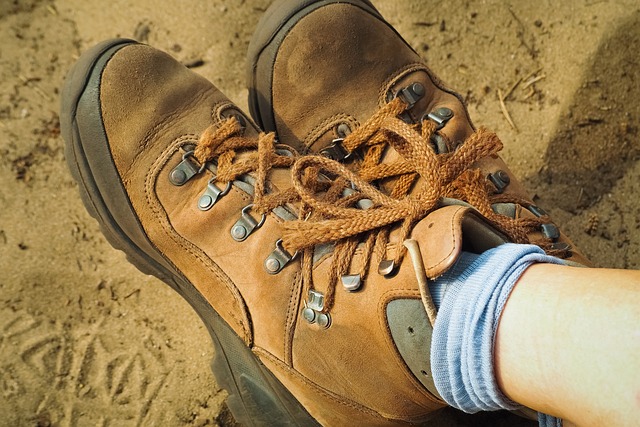Hiking is an excellent way to explore nature, get exercise, and enjoy fresh air. Proper footwear is a critical component of a successful hiking trip, as it provides support, stability, and protection for the feet and ankles. Hiking boots are the preferred footwear for most hikers, but the question of how tight they should be worn is often debated. Wearing hiking boots that are too tight can lead to discomfort, blisters, and even long-term foot damage. Conversely, wearing boots that are too loose can result in ankle sprains, falls, and twisted ankles.
In this article, I will discuss how tight hiking boots should be worn and provide guidance on finding the right fit for a safe and enjoyable hiking experience.
Factors to Consider When Determining Boot Tightness
When deciding how tight hiking boots should be worn, there are several factors to consider. These factors can affect the fit and comfort of the boots and ultimately impact the hiker’s overall hiking experience. Here are some of the most important factors to keep in mind:
- Type of terrain: Different types of terrain require different levels of support and protection from hiking boots. For example, if hiking on rugged, rocky terrain, a tighter fit may be needed to prevent the foot from sliding around inside the boot.
- Weather conditions: In hot weather, the feet may swell, so a looser fit may be more comfortable. In colder weather, thicker socks or insoles may be necessary, which can affect the fit of the boots.
- Individual foot anatomy: Every foot is unique, and some hikers may have wider or narrower feet than others. It’s important to take into account the shape and size of the foot when selecting hiking boots and adjusting the fit.
- Personal preference: Some hikers may prefer a tighter or looser fit based on their personal comfort level and past experiences with hiking footwear.
Considering these factors can help hikers determine the appropriate level of tightness for their hiking boots. It’s also important to keep in mind that the fit may need to be adjusted throughout the day or as conditions change.
Finding the Right Fit
Finding the right fit for hiking boots is crucial for a comfortable and safe hiking experience. Here are some tips for ensuring the proper fit:
- Use a Brannock Device: A Brannock Device is a tool used to measure the length, width, and arch length of the foot. It can be found at most shoe stores and is an excellent way to get an accurate measurement of your foot.
- Try on different sizes and brands: Different brands of hiking boots may have slightly different sizing, so it’s important to try on several sizes and brands to find the best fit. Remember to try on both boots and wear the same socks and insoles you plan to wear on your hiking trip.
- Stand up and walk around: When trying on hiking boots, be sure to stand up and walk around to get a feel for the fit. Check for any areas of pressure or discomfort and make adjustments as necessary.
- Check the fit of the heel and toes: The heel of the boot should fit snugly without slipping, and there should be enough room in the toe box to wiggle your toes comfortably.
- Consider adding insoles: Custom or aftermarket insoles can provide additional support and comfort, and may also affect the fit of the boots.
It’s important to remember that finding the right fit may take some trial and error. Hikers should take the time to properly fit their hiking boots before embarking on a trip to avoid discomfort, blisters, or foot injuries.
How Tight is Too Tight?
Wearing hiking boots that are too tight can be uncomfortable and even dangerous. Here are 4 signs that hiking boots are too tight:
- Pressure points: If you feel pain or discomfort in specific areas of your feet, such as the toes or sides of the foot, the boots may be too tight.
- Numbness or tingling: If you experience numbness or tingling in your toes or feet, it may be a sign that the boots are too tight and cutting off circulation.
- Restricted movement: If you can’t move your feet or toes comfortably, the boots may be too tight, which can restrict your movement and make hiking more challenging.
- Blisters and calluses: If you notice blisters or calluses on your feet after hiking, it may be a sign that your boots are too tight and rubbing against your skin.
If you experience any of these symptoms, it’s important to adjust the fit of your boots. Loosening the laces, adjusting the insoles, or trying a different size or brand may help alleviate discomfort and prevent further foot damage. Additionally, it’s important to break in new boots gradually to allow them to conform to the shape of your feet and avoid discomfort or injury.
How Loose is Too Loose?
Wearing hiking boots that are too loose can also be problematic and may lead to foot injuries. Here are 4 signs that hiking boots are too loose:
- Heel slippage: If your heel slips up and down inside the boot while walking, it may be a sign that the boots are too loose and not providing enough support.
- Ankle instability: If you feel your ankles rolling or wobbling while walking, it may be a sign that the boots are too loose and not providing enough ankle support.
- Lack of support: If you feel like your foot is not securely held in place, it may be a sign that the boots are too loose and not providing enough support for your foot and ankle.
- Toe bang: If your toes repeatedly hit the front of the boot when walking downhill, it may be a sign that the boots are too loose and not providing enough stability.
If you experience any of these symptoms, it’s important to adjust the fit of your boots. Tightening the laces or adding insoles may help improve the fit and provide more support. Additionally, it’s important to choose boots that fit snugly without being too tight or too loose, to prevent foot injuries and discomfort.
Personal Preferences and Special Considerations
While there are general recommendations for how tight hiking boots should be worn, personal preferences and special considerations can also play a role in determining the appropriate level of tightness. Here are some factors to consider:
- Orthotics or custom insoles: Hikers with foot conditions, such as flat feet or high arches, may require custom insoles or orthotics to provide additional support and improve the fit of the boots. In these cases, it’s important to consider the fit of the boots with the orthotics or insoles in place.
- Hiking socks: The thickness and material of hiking socks can also affect the fit of the boots. Hikers should choose socks that are appropriate for the weather and terrain, and ensure they fit well with their boots.
- Personal comfort level: Some hikers may prefer a tighter or looser fit based on their personal comfort level and past experiences with hiking footwear. It’s important to choose boots that feel comfortable and provide adequate support and protection.
- Terrain and weather conditions: The type of terrain and weather conditions can also influence personal preferences for how tight hiking boots should be worn. For example, hikers may prefer a tighter fit for steep or rocky terrain, while a looser fit may be more comfortable in hot weather.
In short, personal preferences and special considerations can influence how tight hiking boots should be worn. Hikers should consider their individual needs and preferences when selecting and fitting hiking boots to ensure a safe and comfortable hiking experience.
Conclusion
In conclusion, It is essential to know how tight should hiking boots be to fully enjoy your adventure. Hiking can be an incredible way to connect with nature and stay active, but wearing the wrong footwear can quickly turn a fun adventure into a painful and unpleasant experience.
Hiking boots should be tight enough to prevent slipping and provide support, but not so tight that they cause discomfort, numbness, or restricted movement. The right fit may vary based on individual foot anatomy, terrain, weather conditions, and personal preferences. It’s important to try on different sizes and brands, use a Brannock Device, and walk around to test for comfort and support. Remember to adjust the fit as necessary and break in new boots gradually to avoid discomfort or injury.
Properly fitting hiking boots are essential to ensure comfort, support, and protection for your feet and ankles. When determining how tight hiking boots should be worn, it’s important to consider various factors, including individual foot anatomy, terrain, weather conditions, personal preferences, and special considerations.
Finding the right fit may require some experimentation, but it’s well worth the effort to avoid discomfort, blisters, or foot injuries. By prioritizing proper boot fit and taking the time to adjust the fit as necessary, hikers can have a safe, enjoyable, and memorable hiking experience. Remember, taking care of your feet is crucial to make the most of your time in the great outdoors.




